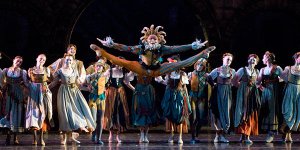Originally published in the Brandeis University Justice
March 6, 2012
A young woman stands perfectly still, arms tilted inwards, the pink fan clutched in her hand fluttering faintly.
Suddenly she jumps forward on beat with the traditional guitar plucking in the background. The fan flies open, revealing a long, rose-colored trail of fabric flowing from its curved folds. As the woman dances about the stage, striking traditional Chinese poses, the crowd responds with cheers, calling her name. This is Asian Pacific Asian Heritage Month at Brandeis.
APAHM is always a fun time on campus, full of colorful cultural events and engaging speakers. This year’s APAHM is particularly significant, as it marks the 40th anniversary of the Brandeis Asian American Student Association, which sponsors APAHM, as well as the 20th anniversary of the Intercultural Center. BAASA co-presidents Stephanie Lee ’13 and Vicky Lee ’13, event coordinator Karen Hu ’12 and treasurer Adam Chow ’12 began the opening performance by praising all 23 members of the executive board for their hard work in creating this year’s events.
The ceremony took place on Saturday night in Levin Ballroom. The theme, “Making Our Mark,” underscores BAASA’s emphasis this year on modern Asian accomplishments. Two musical groups that have gained popularity on YouTube, Ben Clement and Rooftop Pursuit, performed. Clement, who opened the show, is currently studying music at Biola University in California. He created a calm peaceful atmosphere with his romantic songs and acoustic guitar, accompanied by a band member playing rhythms on a wooden box. Clement, who considers himself a “hopeless romantic” told the crowd that many of his songs were written about previous relationships, eliciting awws from the audience. Though many of his original songs had a singer-songwriter, John Mayer-type sound, it was his last number, Michael Jackson’s “Man in the Mirror” that was most popular with the audience. Though Clement didn’t quite have the vocal ability to make the song as strong as it could have been, the song’s message of social change was clearly appreciated.
After Clement’s performance, Ayan Sanyal ’14 came on stage to sing Deep Blue Something’s “Breakfast at Tiffany’s,” a nod to “kids who grew up in the ’90s.” Then the newest student group under the BAASA umbrella, the Taiwanese Student Association, begins its performance with a loud, striking drum solo by Aaron Yang ’14. As the drum was rolled off stage eight female dancers took their places, standing like posed statues in traditional Taiwanese dress. One by one they moved to the front of the stage, demonstrating cultural fan, ribbon, handkerchief, sword, martial arts, umbrella and peacock dances. While each performer moved with clarity and purpose, it would have been more entertaining to see the dancers interact with one another. Instead, each demonstration ended before the next began, leaving seven dancers still as one moved.
After the formal grace of TSA’s performance, the ceremony’s mood changed abruptly as the Southeast Asian Club began their skit, “The Crystal Heart,” based on a traditional Vietnamese story. The skit, which imparts the story of a fisherman’s unrequited love for a snooty princess, was intentionally silly, and put the audience in a celebratory mood leading into a song by the Korean Student Association’s band. Seven KSA members took the stage to play a Korean pop song complete with impressive trumpet solos and heartfelt singing.
Rooftop Pursuit, the other professional group to perform, opened the ceremony’s second act with several original songs and covers, including Christina Perri’s “1000 Years.” Lead singer and keyboardist Phil Lee made a few humorous remarks about the three-man outfit of Korean-Americans, saying, “Our last names are all ‘Lee.’ … We didn’t do it on purpose.” Like Clement, many of Rooftop Pursuit’s songs were about romantic love, though guitarist Paul Lee’s wailing guitar riffs added some heat to the ballads.
Dan Ding ’12, the ceremony’s deep-voiced announcer took a moment away from the mic to perform an original classical song called “Piano Impromptu,” inspired by a swift change in weather Ding experienced while practicing with his high school sailing team. The audience was riveted by Ding’s obvious skill, and the reverent silence was broken only by applause as he concluded his piece.
The Brandeis Chinese Cultural Connection was next to perform, as seven members showed off their dance skills, combining hip-hop moves with traditional Chinese dances as they swayed, kicked and spun to Chinese artist Show Lo’s “Show of Love.” The dancers, outfitted in red and black and decked out in sunglasses, certainly looked the part of a professional hip hop group.
Siddhi Krishna ’12, representing the South Asian Student Association brought another serious moment to the ceremony as she played a piece of Carnatic music, the classical music of South India. Krishna plucked notes and melodies on her violin, playing an ode to Lord Ganesha, Hinduism’s remover of obstacles. Krishna struck an interesting silhouette, kneeling on the stage rather than standing of sitting in a chair, as most Western musicians would have.
The APAHM opening ceremony concluded with a group number combining several popular Asian songs into one high-energy dance number called Project BAASA: PANDAmonium. The entire BAASA e-board plus other dancers were clearly having fun with the performance, which, according to the program, “shows how Asians got more than smarts. They also got SWAG.” After watching this year’s opening performance, I’d have to say I agree.
APAHM continues throughout March, including the SKINS Fashion Show on March 16 and theTemptasian 40th Anniversary Party on March 23.







